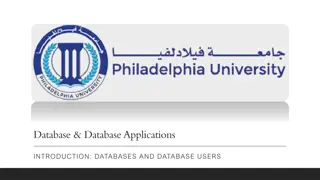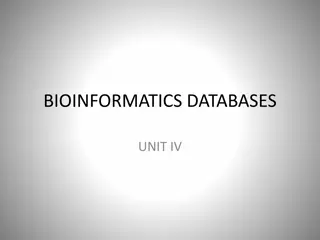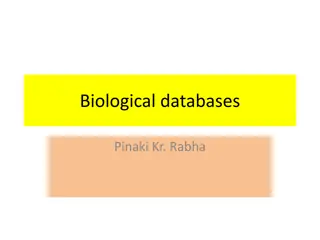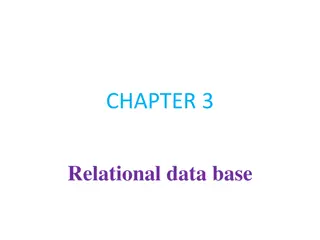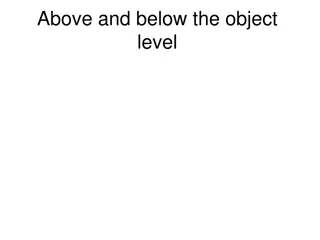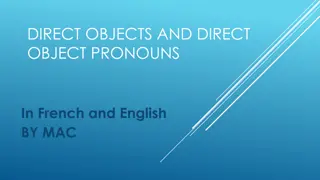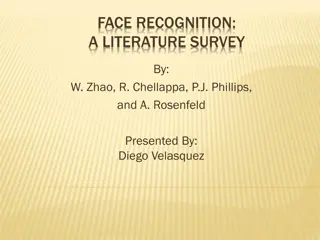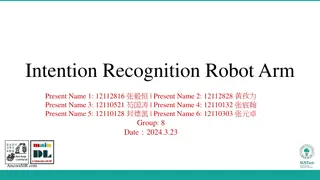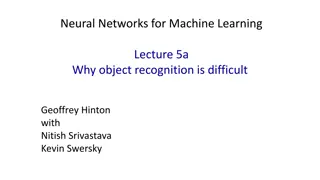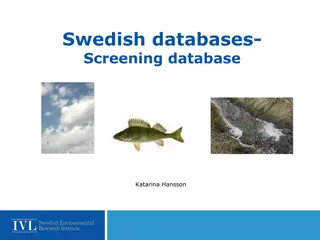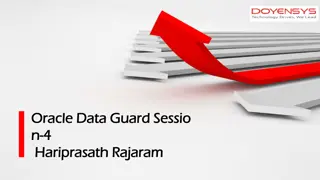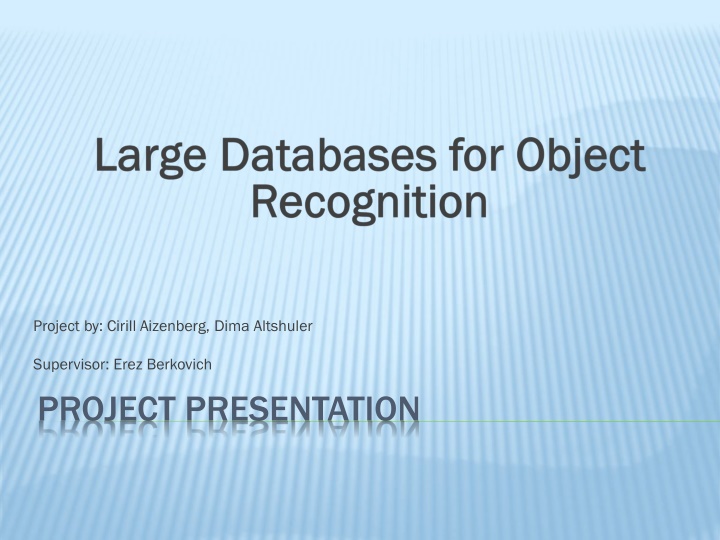
Innovative Image Recognition Algorithms for Efficient Data Access
Explore how cutting-edge algorithms like SSL and KNN are revolutionizing image recognition processes, enabling fast and accurate classification by extracting key features and reducing data size.
Download Presentation

Please find below an Image/Link to download the presentation.
The content on the website is provided AS IS for your information and personal use only. It may not be sold, licensed, or shared on other websites without obtaining consent from the author. If you encounter any issues during the download, it is possible that the publisher has removed the file from their server.
You are allowed to download the files provided on this website for personal or commercial use, subject to the condition that they are used lawfully. All files are the property of their respective owners.
The content on the website is provided AS IS for your information and personal use only. It may not be sold, licensed, or shared on other websites without obtaining consent from the author.
E N D
Presentation Transcript
Project by: Cirill Aizenberg, Dima Altshuler Supervisor: Erez Berkovich PROJECT PRESENTATION
INTRODUCTION In the recent years everyone knows that Internet contains infinite amount of free data that can be used for large number of applications. Along all the free data out there, we can find billions of images that can be widely used. But there are two major problems that preventing easy access to this reach incredible database, one is that we need a technique to recognize the visual content of the images and the second is the ability for fast search of the huge amount of images. In our project we implemented one of the new and the promising algorithms that can be found in the computer science community, we will review all the steps of the algorithm, describe the logic behind each step and finally compare the results to other available simple approaches.
PROJECT GOALS Test the algorithms on toy and real data Implement the SSL and KNN algorithms Get familiar with existing approaches
IMAGE RECOGNITION PROCESS Features extraction Dimension reduction Algorithm Classification Extracting most important features image. Reducing data size using descriptor the Normalization and the size of the features vector. Using PCA to hold only the top and the most important dimensions Classifying unlabeled data using algorithm order to receive classification function the reducing from the in the by Gist
IMPLEMENTATION OF THE KNN ALGORITHM K-nearest neighbor (KNN) is very simple algorithm that can classify objects based on closest training examples in the tested dataset. In other words for each unlabeled data point in our space we will test the k nearest labeled neighbors to that point and we will determine the type of the data according to the most common type amongst the k neighbors.
IMPLEMENTATION OF THE SSL ALGORITHM The main idea behind the SSL algorithm is that we can use not not only only the the labeled labeled data algorithms) but but also also the the unlabeled see that if the algorithm will take in to the consideration the density of the whole data we can receive much better results. data (supervised unlabeled data data. We will
USING GRAPH LAPLACIAN In order to find classification function we will use graph- based semi-supervised learning. We will define graph Laplacian L that will define a smoothness operator that takes into account the unlabeled data. The combinatorial graph Laplacian is defined as: ? = ? ? 22?2, x data point ???= exp( ?? ?? ???= ????
USING GRAPH LAPLACIAN We want to find f that minimizes: ???? + ? ???(? ? ???? smoothness; ? ???(? ? agreement with labels y labels ? if point is labeled ???= ? otherwise ???= 0 The solution is: (? ? ? = ?? ;? ? system (n is the number of points)
ALTERNATIVE WAY FINDING CLASSIFICATION ALTERNATIVE WAY FINDING CLASSIFICATION FUNCTION FUNCTION We do not need to work with the whole graph Laplacian instead we can find smooth vectors that will be linear combination of eigenvectors ? with small eigenvalues. We can significantly reduce the dimension of ? by requiring it to be of the form ? = ?? where ? is a ? ? matrix whose columns are the ? eigenvectors with smallest eigenvalue. If we choose some values for ? like 100 the optimal ? will be solution to ? ?system (? + ???? ? = ????
PROBLEM FINDING CLASSIFICATION FUNCTION PROBLEM FINDING CLASSIFICATION FUNCTION As we saw in previous section in order to calculate the Classification function we can choose one of two approaches. Direct resolving we have to invert L matrix Use of eigenvectors we have to find the eigenvectors by diagonalizining L If we take for example 100 million images we will find out that it's impossible to invert or diagonalize 100 million x 100 million matrix. Because our algorithm developed for large scale databases, 100 million images is a reasonable number for database and this is why there is need to find another solution for finding Classification function.
THE USE OF THE USE OF EIGENFUNCTIONS EIGENFUNCTIONS First we will look at the data set as the number of points goes to n .This way we will see the density of the data. For each marginal distribution we will compute the eigenfunctions. Given a large set of data points we will create a histogram which will be an approximation to the true marginal.
THE USE OF THE USE OF EIGENFUNCTIONS EIGENFUNCTIONS After we calculate all the histograms we can solve for the eigenfunctions of each 1D distribution. We solve for values of the eigenfunction and their associated eigenvalues at the locations of the bin centers. If we will chose bin number as 20 we will get small system 20 20 that is easily solved. After we have all the eigenfunction for each dimension we can easily find the approximation for the eigenvectors. For each data point we will do a 1D interpolation in the eigenfunction to find the eigenvector value.
SSL ALGORITHM SUMMARY For each image from input data base create Gist descriptor For each Gist descriptor vector rotate the data to maximize separabillity (using PCA) For each of the input dimensions, Construct 1D histogram, Solve numerically for eigenfunction and values Order eigenfunctions from all dimensions by increasing eigenvalue and take the first k Interpolate data into k eigenfunctions yields approximate eigenvectors of Laplacian Solve k x k system to give Classification function 1. 2. 3. 4. 5. 6.
TESTING ON TOY DATA First we tested on simple two dimension data in order to see graphical results.
TESTING ON TOY DATA KNN SSL
TESTING ON REAL DATA We have chosen online image database called CIFAR-10. This database contains thousands of labeled images but all of them categorized only to ten categories. This database will allow us easy testing because we have limited set of categories and more importantly they all were labeled manually by human. Because the SSL algorithm returns binary classification function each execution we can find images from one of the categories
TESTING ON REAL DATA Correctness of the Classification function classification results of class airplane . Labeled samples contained 50 positives and 100 negatives classification results of class airplane . Labeled samples contained 700 positives and 2500 negatives
TESTING ON REAL DATA All classes classification All classes classification
TESTING ON REAL DATA SSL vs. KNN SSL vs. KNN
TESTING ON REAL DATA SSL vs. KNN (zoomed in) SSL vs. KNN (zoomed in)
CONCLUSIONS Classification algorithm that is based on KNN calculation is not complete. It doesn t take into consideration the density and the smoothness of the data, thus it s correctness is damaged. Effectiveness of SSL (based on Eigen-Functions) could be increased, by taking bigger amount of positive and negative samples. Eigen-Function algorithm can retrieve higher positive true percentage if the systems demand allows higher false positive percentage. It is flexible unlike KNN.
CONCLUSIONS (CONTINUE) Eigen-Functions algorithm has low complexity than other similar algorithms. Which could enhance classification on large databases. Every class of data is different, thus it requires different tuning for setting the optimum threshold and choosing the most suitable amount of positive and negative samples. The SSL algorithm (based on Eigen-Functions) has low TPR values, when the allowed FPR is low.

